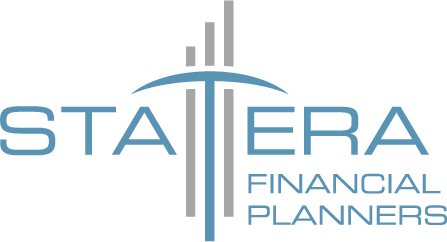Maximizing Compound Interest for a Secure Retirement

Maximizing Compound Interest for a Secure Retirement
Are you worried about having enough money for retirement? Compound interest can be a powerful tool for building your nest egg. This article will explore strategies for maximizing compound interest, debunk common myths, and provide practical tools for retirement planning. By understanding how compound interest works with education policies, securities, and even planning for nursing home costs, you'll gain valuable insights to secure your financial future. We'll examine case studies and discuss how market factors, like those affecting the New York Stock Exchange, can impact your retirement savings.
Key Takeaways
- Compound interest accelerates wealth accumulation over time, particularly when investments start early
- Consistent contributions and diversified portfolios enhance the power of compound interest in retirement planning
- Professional advice can provide tailored strategies to maximize compound interest benefits for individual financial goals
- Professional financial software provides valuable tools for estimating compound interest returns in retirement planning
- Understanding common misconceptions about compound interest helps in making informed retirement investment decisions
Understanding Compound Interest for Retirement Planning
Understanding compound interest is crucial for effective retirement planning. This section explores the definition of compound interest in retirement contexts, examines how time impacts its accumulation, and discusses key factors influencing rates. By grasping these concepts, individuals can make informed decisions about their retirement savings, considering factors like present value, salary growth, and securities investments.
Defining Compound Interest in the Context of Retirement
Compound interest in retirement planning refers to the process where investment earnings generate additional earnings over time. This concept is crucial for building trust in long-term financial strategies. The frequency of compounding, often aligned with payroll cycles, can significantly impact the growth of retirement savings. Investment funds utilize compound interest to maximize returns, potentially increasing an individual's retirement nest egg. Understanding the margin between simple and compound interest helps investors appreciate the power of this financial tool.
- Compound interest accelerates wealth accumulation
- Frequency of compounding affects growth rate
- Investment funds leverage compound interest for higher returns
- Understanding margins between simple and compound interest is key
The Impact of Time on Compound Interest Accumulation
Time significantly influences compound interest accumulation in retirement planning. The annual rate of return on investments compounds over extended periods, potentially yielding substantial growth. Employers often provide retirement plans that capitalize on this principle, allowing employees to benefit from long-term compound interest. Accounting for time horizons in retirement strategies enables individuals to make informed decisions about bond allocations and other securities, as reflected in annual reports.
Key Factors Influencing Compound Interest Rates
Several key factors influence compound interest rates in retirement planning. The choice of investment vehicles, such as stocks or bonds, affects potential returns and compound growth. Market conditions and economic factors impact interest rates, which in turn affect compound interest calculations. statera financial planners can help individuals navigate these complexities, considering factors like inflation and risk tolerance when developing retirement strategies. Understanding how these elements interact allows for more accurate use of interest growth calculators, enabling better long-term financial planning for retirees and caregivers alike.
Strategies for Maximizing Compound Interest
Maximizing compound interest for retirement involves key strategies. Starting investments early capitalizes on long-term growth potential. Consistent contributions to financial accounts fuel compound interest accumulation. Selecting the right investment vehicles, including equity-based options, can significantly impact overall returns. Understanding these approaches helps individuals optimize their retirement savings and build a secure financial future.
Starting Investments Early for Maximum Effect
Starting investments early is a powerful strategy for maximizing compound interest in retirement planning. The formula for exponential growth becomes particularly potent when applied over extended periods, allowing even modest initial investments to grow significantly. This approach not only builds credit but also provides a financial buffer for emergencies. While the concept applies globally, the principle remains consistent: early investment harnesses the full potential of compound interest.
Consistent Contributions and Their Role in Growth
Consistent contributions play a vital role in maximizing compound interest for retirement. Regular deposits into investment accounts leverage compound growth calculators to project long-term returns. This strategy helps manage risk by dollar-cost averaging in trading activities. Investors should consider their tax bracket when planning contribution amounts, as it may impact overall growth. The power of compound interest becomes evident through consistent contributions:
- Accelerates wealth accumulation over time
- Mitigates market volatility risks
- Optimizes tax efficiency in retirement savings
- Enhances the effectiveness of compound growth
The Benefits of Compound Interest in Retirement Funds
The Role of Compound Interest in Wealth Accumulation
Compound interest plays a pivotal role in wealth accumulation for retirement, acting as a powerful force in the stock market and influencing asset allocation strategies. As investments grow over time, market indexes often serve as a benchmark for measuring long-term performance. Effective menu selection of investment options, with the help of your investment professional, can significantly enhance the compounding effect on retirement savings.
How Compound Interest Outpaces Inflation Over Time
Compound interest serves as a powerful tool in outpacing inflation over time, particularly in retirement funds. This effect becomes evident when examining long-term trends on the indexes, where well-managed portfolios consistently surpass inflationary pressures. In regions like Africa, where economic volatility can be more pronounced, regulatory frameworks play a crucial role in ensuring that compound interest strategies remain effective against inflation. Investment options, including those tied to market indices, offer retirees the potential to maintain and grow their purchasing power despite rising costs of living.
Comparing Different Investment Vehicles for Retirement
Different investment vehicles offer varying potential for compound interest in retirement planning. Stocks typically provide higher long-term returns, potentially outpacing inflation, while bonds offer more stability. Index funds, which track market benchmarks, can provide diversified exposure with lower fees, enhancing the compounding effect. Investors can use compounding calculators to compare the projected growth of various options based on different interest rates and investment horizons. Statera Financial Planners can help individuals select the most appropriate mix of investment vehicles to maximize compound interest and achieve their retirement goals.
Common Myths About Compound Interest and Retirement
Common misconceptions about compound interest in retirement planning can hinder financial success. This section examines myths surrounding savings accounts, risk-reward relationships, and market volatility's impact on compound interest. Understanding these topics is crucial for optimizing registered retirement savings plans, employment-based accounts, and individual retirement accounts. Accurate knowledge empowers individuals to make informed decisions about their money and retirement strategies.
Debunking Misconceptions About Savings Accounts
Savings accounts often fall short in maximizing compound interest for retirement due to their typically low interest rates. While they offer stability, savings accounts may not keep pace with inflation, potentially eroding purchasing power over time. An investment strategy that incorporates a diversified portfolio, including global assets and considering factors like greenhouse gas emissions, can yield better long-term results. Utilizing an investment interest calculator helps individuals compare potential returns across various account types:
- Savings accounts: Low risk, low return
- Investment portfolios: Higher risk, potentially higher returns
- Diversified strategies: Balance risk and reward
- Global investments: Access to broader market opportunities
Exploring the Misunderstanding of Risk and Reward
The misconception of risk and reward in compound interest often leads to suboptimal retirement planning. Many investors overlook the potential benefits of diversified asset management strategies, focusing solely on low-risk options like gold bullion. However, a compound savings calculator can easily demonstrate how higher-risk investments may yield superior long-term results. Financial planners provide valuable information on balancing risk and reward, considering factors such as medicare costs in retirement planning. A well-structured approach to risk management can significantly enhance compound interest accumulation over time:
- Diversified portfolios balance risk and potential returns
- Long-term investment horizons often mitigate short-term volatility
- Regular portfolio rebalancing maintains optimal risk levels
- Professional asset management can navigate complex market conditions
Clarifying the Relationship Between Compound Interest and Market Volatility
Market volatility does not negate the benefits of compound interest in retirement planning. While short-term fluctuations can impact investment values, the long-term effects of compounding remain potent. Investors should focus on maintaining a diversified portfolio to mitigate risks associated with market volatility, considering factors such as inflation and health care costs. The internal revenue service provides guidelines on tax-efficient strategies that can enhance compound interest growth, even in volatile markets. By understanding this relationship, individuals can make informed decisions about debt management and retirement savings, ensuring their financial health over time.
Conclusion
Maximizing compound interest is a pivotal strategy for securing a comfortable retirement, as it harnesses the power of exponential growth over time. By starting early, making consistent contributions, and selecting appropriate investment vehicles, individuals can significantly enhance their retirement savings and outpace inflation. Understanding the complexities of compound interest, debunking common myths, and utilizing available tools and resources empower investors to make informed decisions about their financial future. Seeking professional advice and learning from successful case studies can further optimize retirement planning strategies, ultimately leading to a more secure and prosperous retirement.

As financial planners, we do not provide specific tax and legal advice. You should always consult your accountant and/or lawyer where necessary. Because of the many ways a strategy may be impacted when segmented, we prefer to communicate collectively with your external professionals to ensure that all recommendations and action plans are in the overall best interest of you, with your professionals working with common goals in mind.
You are never obligated to act on our recommendations of products, services, or advice.
